DevSecOps
The Power of Security Automation in DevSecOps
DevSecOps is revolutionizing the software development process, blending security practices seamlessly into DevOps workflows. As organizations embrace this approach, it becomes crucial to automate security compliance in DevSecOps pipelines to ensure the integrity and confidentiality of sensitive data. This article explores the significance of automating security compliance in DevSecOps pipelines and highlights the key benefits it offers.
Enhancing Secure Software Development Practices for DevSecOps
Secure software development practices lie at the core of DevSecOps. By integrating security into every stage of the software development lifecycle, organizations can proactively address vulnerabilities and mitigate risks. DevSecOps teams must adopt automated tools and technologies to enforce security controls, implement security testing, and monitor code for potential security flaws. Automating these practices enables rapid and consistent security assessments, minimizing human error and freeing up valuable resources for other critical tasks.
Integrating Security into DevOps Workflows
Integrating security into DevOps workflows ensures that security considerations are not an afterthought but are incorporated from the very beginning. By automating security controls, organizations can seamlessly embed security checks into the continuous integration and continuous deployment (CI/CD) pipeline. This integration allows security vulnerabilities to be detected early in the process, making it easier to address them before they become costly and time-consuming issues. It fosters a collaborative environment where developers and security teams work together to identify and resolve security concerns promptly.
Continuous Security Testing in DevSecOps
Continuous security testing is a vital aspect of DevSecOps. It involves the regular assessment of applications, infrastructure, and code for vulnerabilities and weaknesses. Automating security testing throughout the development lifecycle helps identify potential threats and vulnerabilities early on. By utilizing automated security testing tools, organizations can perform dynamic and static analysis, vulnerability scanning, and penetration testing automatically. This approach provides real-time feedback, reduces manual effort, and ensures security is an integral part of the software development process.
Implementing Secure Coding Standards in DevSecOps
Implementing secure coding standards is crucial for developing robust and secure applications. By automating secure coding practices, organizations can enforce industry-standard guidelines and best practices consistently. Automated tools can analyze code repositories, identify potential security flaws, and provide developers with actionable feedback in real-time. This approach enables developers to address security vulnerabilities early in the development cycle and build more secure and resilient software.
The Benefits of Security Automation in DevSecOps
Automating security compliance in DevSecOps pipelines offers numerous benefits for organizations. Firstly, it ensures that security is an inherent part of the software development process, minimizing the risk of security breaches. Secondly, automation helps organizations achieve faster and more efficient security assessments, accelerating time-to-market for applications. Thirdly, it allows security teams to focus on more strategic tasks by reducing manual effort and repetitive security checks. Finally, automation enhances collaboration between development and security teams, fostering a shared responsibility for building secure applications.
In conclusion, automating security compliance in DevSecOps pipelines is essential for organizations seeking to develop secure, robust, and resilient applications. By incorporating secure software development practices, integrating security into DevOps workflows, conducting continuous security testing, and implementing secure coding standards, organizations can build a solid foundation for secure software development. With security automation, organizations can streamline security processes, reduce risk, and ensure the protection of valuable data throughout the software development lifecycle.
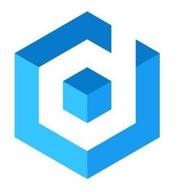

1 Review
Deepfence provides application layer intrusion prevention for modern workloads. Deepfence's Security as a Microservice gets deployed as a lightweight sidecar container on every host, and can be scaled and orchestrated in exactly the same manner as your other containers.


1 Review
CloudDefense platform helps to automate and manage your enterprise’s security risk across the entire application portfolio. It helps organizations proactively strengthen their application security.
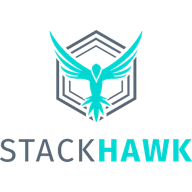

1 Review
StackHawk makes it simple for developers to find, triage, and fix application security bugs. Scan your application for AppSec bugs in the code your team wrote, triage and fix with provided documentation, and automate in your pipeline to prevent future bugs from hitting prod.


1 Review
Dependency-Track is an intelligent Supply Chain Component Analysis platform that allows organizations to identify and reduce risk from the use of third-party and open source components. Dependency-Track takes a unique and highly beneficial approach by leveraging the capabilities of Software Bill of Materials (SBOM). This approach provides capabilities…
Read more about this company

1 Review
Hoss helps teams make better API-driven products. Our simple drop-in solution makes it easy to track and manage third-party APIs. Get visibility into API performance, be alerted of errors before your customers notice, reduce the amount of time spent debugging integrations, and much more.


1 Review
WhiteSource is the leading solution for agile open source security and license compliance management. It integrates with your development environments and DevOps pipeline to detect open source libraries with security or compliance issues in real-time. WhiteSource doesn’t only alert on issues, it also provides actionable, validated remediation paths to…
Read more about this company

1 Review
Portshift is a Kubernetes security leader, our innovative digital identity-based solution creates a unique, signed identity for each workload at the CI/CD pipeline stage, that is then used to enforce runtime security policies.


1 Review
Use the Pentest-Tools.com platform to quickly detect and report vulnerabilities in websites and network infrastructures! ✔ 25+ tightly integrated penetration testing and ethical hacking tools for easier, faster, and more effective engagements ✔ Built for pentesters, sysadmins, web devs, MSPs, business owners, and other professionals seeking to automate…
Read more about this company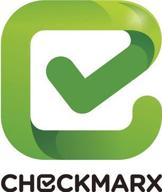

1 Review
Checkmarx is the Software Exposure Platform for the enterprise. Over 1,400 organizations around the globe rely on Checkmarx to measure and manage software risk at the speed of DevOps. Checkmarx serves five of the world’s top 10 software vendors, four of the top American banks, and many government organizations and Fortune 500 enterprises, including SAP…
Read more about this company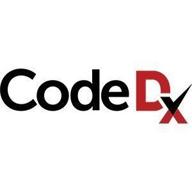

1 Review
Code Dx’s automated application vulnerability correlation shaves weeks off that process so you can get right to fixing your code. Its vulnerability management lets you quickly prioritize vulnerabilities (to fix the most important ones first), track progress of their remediation, and observe how your code's security changes over time.
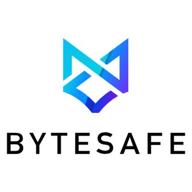

1 Review
Your code is your business. Manage the npm packages you depend on with Bytesafe. Your team’s single source of truth for secure code.

1 Review


1 Review
AppScanOnline is the leading provider of mobile app security software for today's developers. AppScanOnline's automated static vulnerability testing service quickly provides security teams with a detailed report compliant with both OWASP Top 10 and Industrial Development App standards, allowing developers to bring their application to market sooner.


1 Review
Detect security flaws in your website or web application and avoid being hacked. HTTPCS Security puts Machine Learning at the service of your cyber security to protect your site against hacking and data leaks.


1 Review
Intruder is a cloud-based vulnerability scanner that helps to find weaknesses in your online systems before the hackers do. It saves you time by proactively scanning for new threats as well as offering a unique threat interpretation system that makes vulnerability management easy.


1 Review
Trusted by security and development teams at top enterprises, MergeBase provides security and development teams with visibility to the real risk in their applications from vulnerable open source components at every stage of the software development lifecycle with CodeGreen, BuildGreen, and RunGreen. MergeBase accelerates triage by minimizing false…
Read more about this company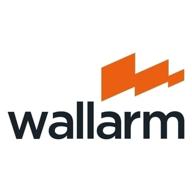

1 Review
Protect any API. In any environment. Against any threats. Wallarm is the platform Dev, Sec, and Ops teams choose to build cloud-native applications securely, monitor them for modern threats, and get alerted when threats arise. Whether you protect some of the legacy apps or brand new cloud-native APIs, Wallarm multi-cloud platform provides key components…
Read more about this company

1 Review
For enterprises who need to protect their infrastructure, CyberArk Conjur software provides proactive security with comprehensive authorization and audit for all IT applications, clouds, and services.
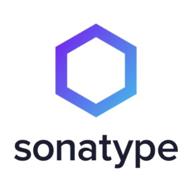

1 Review
Continuously secure your entire software supply chain. Empower developers to select safer components. With a Chrome browser extension, developers know if an open source component is vulnerable when selecting from public repositories. Remediate known issues within the IDE. With integration to the most popular IDEs, developers can select the best…
Read more about this company- DevSecOps is a software development methodology that integrates security practices into the DevOps process. It emphasizes the need for collaboration between development, operations, and security teams throughout the software development lifecycle.
- DevSecOps is important because it prioritizes security from the beginning of the software development process. By integrating security practices into DevOps workflows, organizations can proactively address vulnerabilities, mitigate risks, and ensure the confidentiality and integrity of their systems and data.
- Implementing DevSecOps offers several benefits. It enables faster and more efficient security assessments, early detection and remediation of vulnerabilities, improved collaboration between teams, and the ability to release secure software at a faster pace. Additionally, it helps organizations comply with regulatory requirements and enhances overall system security.
- DevSecOps differs from traditional security approaches by integrating security into every stage of the software development lifecycle. Traditional approaches often treat security as an afterthought, while DevSecOps emphasizes the need to address security concerns from the beginning, utilizing automation, collaboration, and continuous monitoring to ensure secure software delivery.

